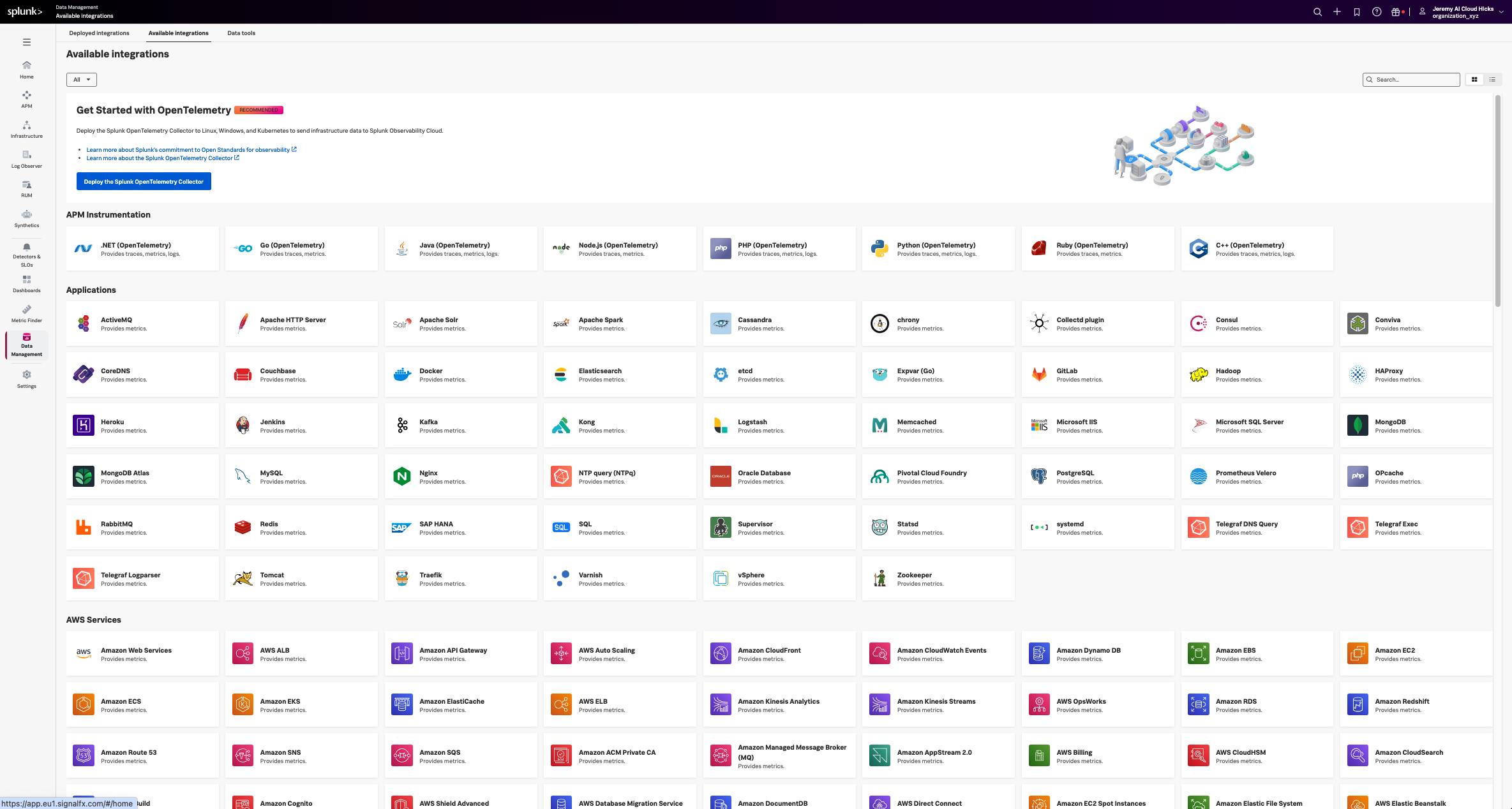Standardize Data Collection
2 minutes Author Tim HardWhy Standards Matter
As cloud adoption grows, we often face requests to support new technologies within a diverse landscape, posing challenges in delivering timely content. Take, for instance, a team containerizing five workloads on AWS requiring EKS visibility. Usually, this involves assisting with integration setup, configuring metadata, and creating dashboards and alerts—a process that’s both time-consuming and increases administrative overhead and technical debt.
Splunk Observability Cloud was designed to handle customers with a diverse set of technical requirements and stacks – from monolithic to microservices architectures, from homegrown applications to Software-as-a-Service.
Splunk offers a native experience for OpenTelemetry, which means OTel is the preferred way to get data into Splunk. Between Splunk’s integrations and the OpenTelemetry community, there are a number of integrations available to easily collect from diverse infrastructure and applications. This includes both on-prem systems like VMWare and as well as guided integrations with cloud vendors, centralizing these hybrid environments.
For someone like a Splunk admin, the OpenTelemetry Collector can additionally be deployed to a Splunk Universal Forwarder as a Technical Add-on. This enables fast roll-out and centralized configuration management using the Splunk Deployment Server. Let’s assume that the same team adopting Kubernetes is going to deploy a cluster for each one of our B2B customers. I’ll show you how to make a simple modification to the OpenTelemetry collector to add the customerID, and then use mirrored dashboards to allow any of our SRE teams to easily see the customer they care about.
